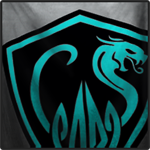 Chemie, on 08 December 2013 - 05:45 AM, said:
Chemie, on 08 December 2013 - 05:45 AM, said:
Why were mediums the bread and butter in the IS? I would argue because of balance between speed, armor and weapons was the sweet spot. PGI has implemented in a way that heavies (and to some extent assaults) have mostly the same speed (to the extent that it matters) but more armor and weapons....so they are the meta (and to some extent so did TT but BV helped there)
The main reason was cost.
Heavies -can- reach speeds of mediums using standard engines - but you've lost a lot of the advantages and still have a higher net cost. XL engines were expensive as ****, as were EndoSteel, Double Heat Sinks, etc.
Your standard IS mech has quite a bit of 'improvement room' that can be made - but for the cost of bringing one Heavy into the maneuverability category of mediums while packing demi-assault payloads, you could field two or three moderately improved Medium mechs.
As I said, before, many of the balance problems come from no concept of repair/rearm and the combat is always enemy mechs dropped in the same (or... supposed to be the same) number on opposing sides. Adding in infantry, armor, hovercraft, aircraft, and the need to provide escort, intercept, recon, etc - balances out the roles much more.
Why wouldn't you take a massively upgraded heavy into Solaris that pays to fix everything after the match?
"Okay - but you mentioned Repair and Rearm...?"
To do this right - you have to, first, create a persistent battlefield where players join large battlefields where the game is already in progress (and they leave the game with the battle still in progress). Hopefully, you've played Command&Conquer: Renegade online when the communities hosted "Marathon" servers. Games could run for 24 hours, or more. I left a game, went to sleep, went to school, and came back to see the same exact game still running.
The game did a number of things passively to promote group cohesion. A 'harvester' would leave the base and come back. For every harvester that went to the (often dangerous) Tiberium field and returned to the refinery, every player got a deposit of 300 credits over the 1-cred/second base rate supplied by the refinery. Damage to vehicles, people, and buildings also rewarded credits (as did repairing friendly structures/units... don't ask how the repair gun worked on friendly soldiers as well as tanks).
In a similar light - a persistent MechWarrior battlefield can have drop-ships that make regular visits and/or supply convoys that make regular runs. Defending your own supply lines and disrupting your opponents' strengthens your standing. These supply convoys could do anything from offer reductions to in-field repair costs, to percentage boosts to C-bill earnings during the game, to the availability of in-theater support (a supply convoy with artillery rounds can grant you more frequent artillery strikes, for example, by lowering the number of faction points necessary to call them in - or whatever system is arranged for them).
Each time a drop-ship arrives, players would have the mechs in their 'ready bay' delivered. New players would be delivered to the battlefield, etc. Matches were one side was substantially unbalanced compared to the others may receive more than the average drop of players with a flurry of objectives to re-balance the faction's interest on the planet (there may be more than just two factions on a 'map').
Repair and rearm costs come from when you return to your base or visit some mobile/remote repair station. Those with 'standard' mechs have low costs to repair their mechs. Those with top-end rides will have considerably higher costs and may have to consider waiting for the drop-ship to 'refresh' their damaged or successfully salvaged XL, ES rides (a dynamic objective would be, in the wake of a battle, escorting salvage teams to the site to recover friendly mechs for repair and enemy mechs for profits of teams participating in the escort).
A similar system could also differentiate between omnimechs and standard mechs. Omnimechs would be able to make in-field real-time customizations, whereas standard mechs would have to await the next drop-ship interval to modify their loadouts. It wouldn't be a 'perfect simulator' of the TT requirements for modifying standard mechs - but it would at least convey some of the spirit.




































